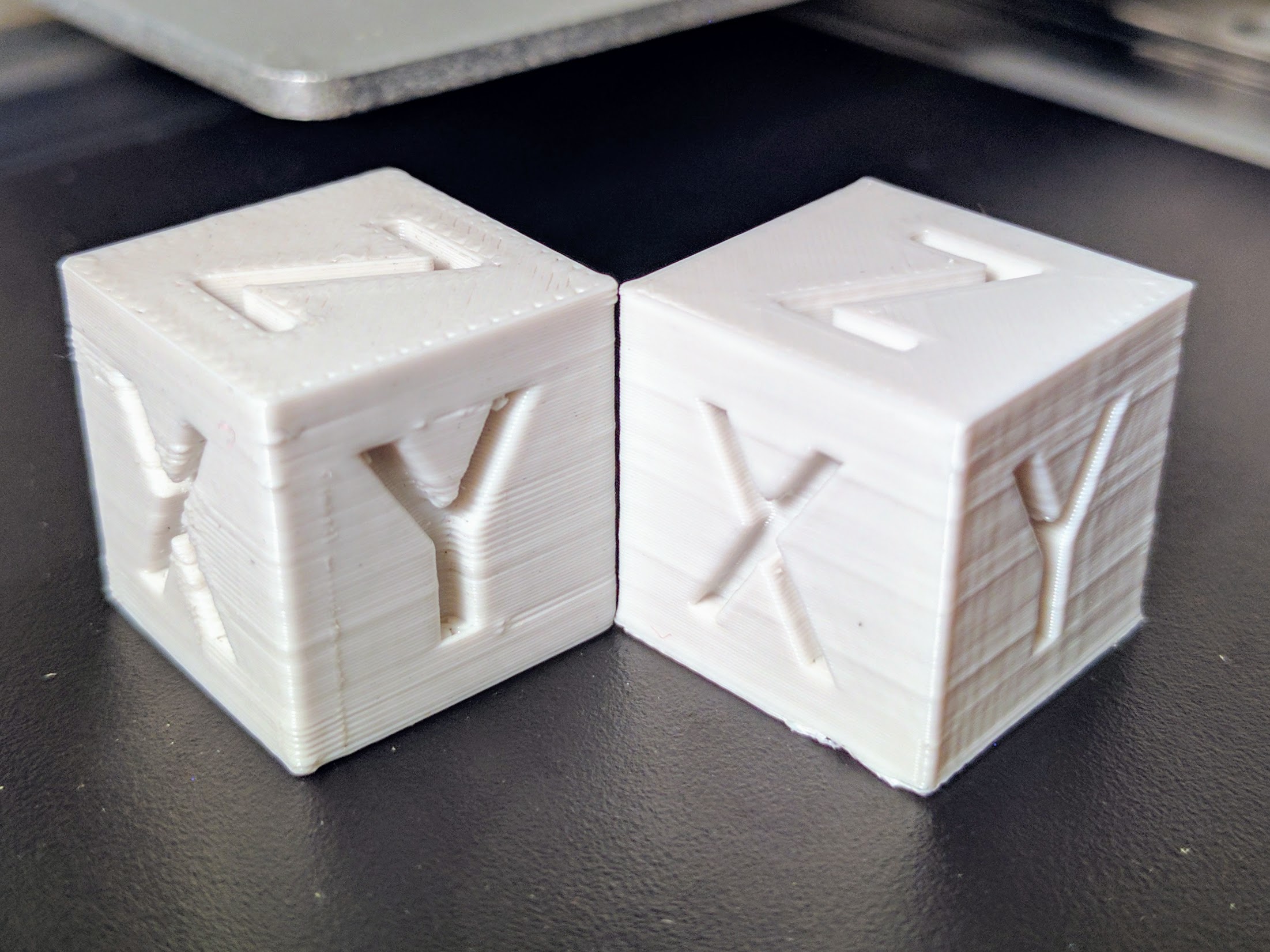cmeyer 2017-4-6 03:09 edit
!!CAUTION!!
- make sure your nozzle offset is correct in the starting g-code
- the nozzle offset may be different than in Cetus Studio. Do the paper test and use a gcode file something like this:
p.p1 {margin: 0.0px 0.0px 5.0px 0.0px; font: 16.0px Helvetica; -webkit-text-stroke: #000000} span.s1 {font-kerning: none}G1 Z0 F9500
G1 X0 Y0 F5500
G28 Z-2 ; home Z axis
G28 X-2 Y2 ; home x y axes
M206 X-180 ; offset X axis so the coordinates are 0..180
M206 Z-182.3 ; nozzle offset (TUNE before using!!)
G1 X90 Y90 F5500
G1 Z0.0 F5500
- re-run this gcode file over and over, each time slowly changing the nozzle offset (just like you would in Cetus Studio) until it passes the paper test
- I found mine to be different from the one determined in Cetus Studio, it appears the G28 comes up with a slightly different result than the native implementation
- Cetus Studio does not currently use the calibration (not nozzle offset, not anything else) when running g-code, so make sure your Cetus is squared, build plate level, etc. Otherwise you risk scratching your build plate!
- if your machine is not squared up, your nozzle offset will vary across the build plate, so to avoid scratching it, you'll need to use a nozzle offset that works across your whole build plate
- don't run g-code blindly, since the nozzle offset is built-in, it's only re-usable on the same printer and only if the offset hasn't changed
See my notes on getting slic3r running with Cetus Studio: https://www.cetus3d.com/community/forum.php?mod=viewthread&tid=268
Based on that, I've evolved my starting g-code snippet to allow me to use Cura. To set up Cura:
- Add a Custom FDM Printer (name it Cetus)
- in the machine settings set widthxdepthxheight as 180x180x180
- in the machine settings set your nozzle size
- in the machine settings I've set all the print-head settings to 0, haven't experimented with that
- start Gcode:
G28 Z-2 ; home Z axis (first for safety)
G28 X-2 Y2 ; home X Y axes
M204 P1500 ; set acceleration
M206 X-180 ; offset X axis so the coordinates are 0..180
M206 Z-182.5 ; nozzle offset (TUNE before using!!) so the bed is at 0
- end Gcode:
M109 ;switch off extruder
M191 ;switch off heated bed
G28 Z-2; home Z
G28 X-2 Y2; home axes
M2 ;end of program
- in the machine settings set the GCode flavor to RepRap Marlin/Sprinter
- I used UnmotivatedGene's printing profiles as a starting point: https://www.dropbox.com/sh/1hahpdgj0l685vl/AADXj0evTDDH3m4WKBMxfBKNa?dl=0 see the reddit thread where he posted that here: https://www.reddit.com/r/cetus3d/comments/5re142/cetus_with_cura_or_simplify3d_other/
- in the print setup you'll have to set the flow rate ridiculously high. I haven't tuned this, yet, I'm currently at 2200%
- in the print setup I had to disable retraction because it just kept retracting instead of starting the print
To print:
- load a model in cura, save g-code
- in Cetus Studio load the Gcode file and print
- Gcode does not give you progress reports, but you will see the temp readings
- to stop a print go to Maintenance->STOP (where the Extrude/Retract buttons are)
Important!
- Make absolutely sure you have the nozzle offset in the start Gcode set appropriately for your printer (based on calibration)
- Make sure your bed is level and your printer square!
The same approach should also apply to other slicers such as KIS Slicer (haven't tried) and I've already confirmed it works with slic3r (see other thread linked above).
Here's what a 20x20 calibration cube looks like on first try with Cura (2200% flow rate), left cube is Cetus Studio normal speed, right cube is Cura w/ UnmotivatedGene's CetusNormal profile (and my flow rate & retraction change mention above):

For Cura I had left the Brim on which is why the bottom edge is not clean.